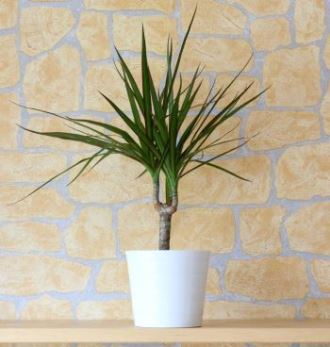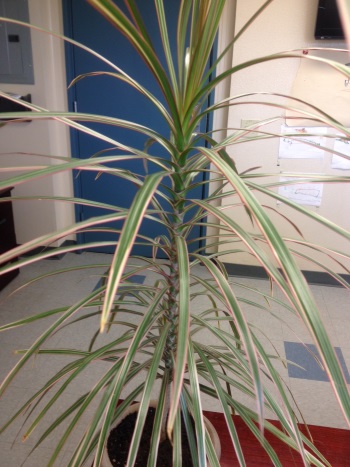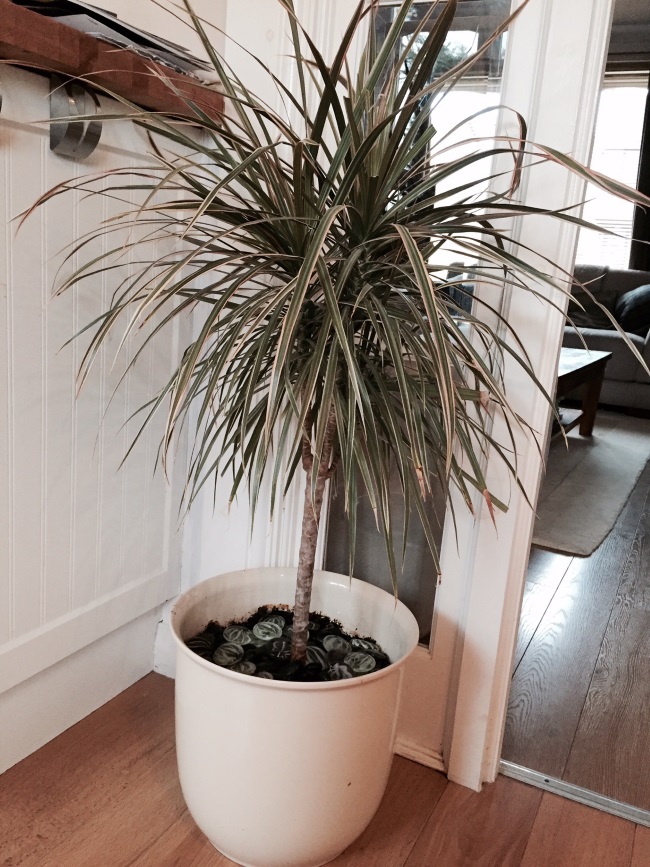





The Dracaena marginata is a species from a large plant genus (Dracaena) that has many variations in leaf sizes, leaf colors and different trunk types. The marginata is one of the most popular seen indoors which can grow into an attractive plant that becomes a great focal point of a room, once it has matured enough.
How it looks and grows: The leaves are quite slim compared to other Dracaena's that arch over. There are three types, one has a dark red outer edge leaves with a green center, another is green in the center with red and yellowish stripes and the other the colorama has thick red edges. The leaves are produced when the trunk grows stems (cane) from the side that often needs to be trained (keeps them growing upwards). These stems have a grayish brown bark (the trunk) that can also produce smaller ones, so the Dragon tree really needs to be pruned to avoid the plant from growing in all directions.
These are slow grower's that can take about 10 years to reach over 5ft tall but look lush once they reach about a foot high. They have a very similar look like palm tree plants.
Level of care: The Madagascar dragon tree is one of the easiest house plants to grow and takes neglect on the chin - then recovers quickly once the correct conditions and care is provided. The one I gave to my sister (about 5ft in height) over 10 years ago was neglected more than cared for and is now looking great.
Leaves falling: If leaves start dying and coming away at the bottom of the plant - do not worry. This is natural and similar to how a yucca tree sheds it's bottom leaves for new growth. You can remove them once you see them deteriorating in look.
Poisonous: This plant is toxic to both cats and dogs. The problem with cats is they love chewing the leaves, as I found out with my parents cats. My parents cats were fine, although they only nibbled a small amount. Because the leaves are very slim I'm sure they think its a type of grass. See more about pets and the effect toxins have here at the ASPCA.
Improving air quality: The Dracaena marginata is one of the plants on NASA's air filtering plants list (part of the NASA clean air study) that reduces benzene, formaldehyde, xylene and toluene, within the air.



As mentioned above the dragon tree will take lots of neglect, although this is not advised of course. Here's some potential problems to look out for.
Brown leaf tips: Possible cause could be dry air, cold drafts or under-watering. Check room humidity and water levels, then see if there are any drafts to find the problem. Once the cause is found just provide the correct care or conditions needed.
Brown soft leaves : The room has become too cold for the plant. Provide higher temperatures.
Brown spots on leaves: The possible cause here is lack of water. The remedy of course is to water more often and keep the soil slightly moist.
Bottom leaves becoming yellow: This as mentioned above is normal. The plant is shedding lower leaves to allow new growth.
Insects: Mealy bug and scale can be a slight problem.
Here you will find instructions and advice for pruning and repotting a Dracaena Marginata »
If you like plants from the Dracaena genus then you may want to take a look at the most popular plants here »
Copyright © www.100flowers.win Botanic Garden All Rights Reserved